Back gardens have seen a lot of action over the last two years as many of us got stuck into projects to improve our exterior surroundings. One of those key jobs was often upgrading the humble garden shed to a status symbol of sorts, as a place to escape the confines of the house and as a way of demonstrating DIY prowess.
With a raft of digital tools now available to even the most novice DIYer, access to the information required to construct building projects is just a click away.
For Dublin 18-based Gavan O’Kelly, who works in the oil and gas industry, the plan was to replace an old shop-bought shed that was falling to pieces.
“Rather than spending another €1,000 on a new shed I thought I’d spend several thousand and build a proper one.”
Several of the lads he was working with were all doing similar projects and he figured he was handy enough to build a shed from scratch, having already completed a couple of projects around his home, the biggest of which was to lay decking.
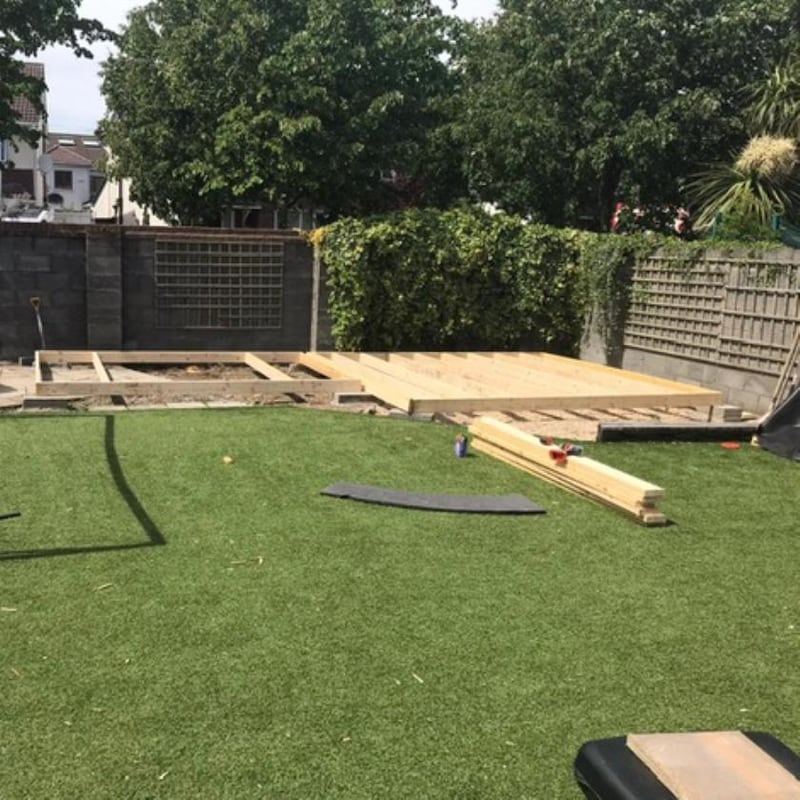
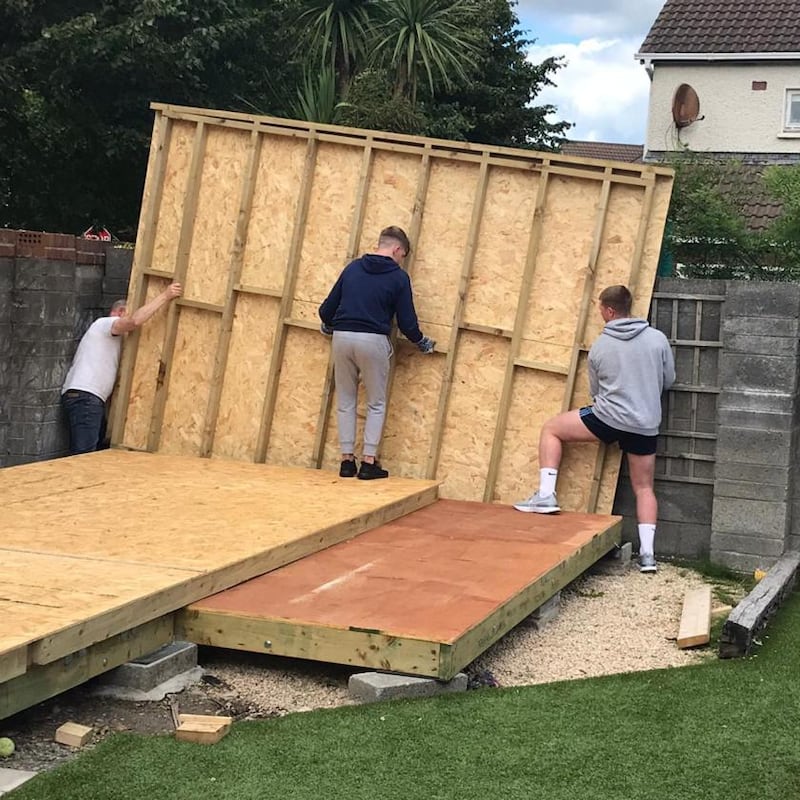
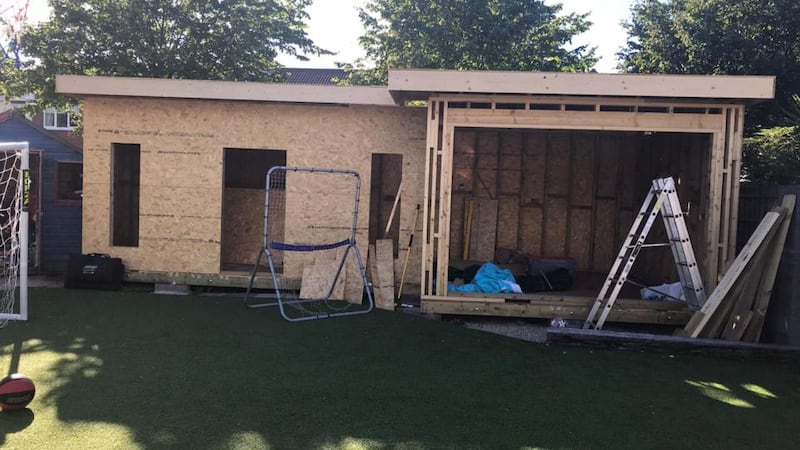
He spent a couple of hours reviewing how-to tutorials on YouTube and it quickly went from just a shed to a garden room, he says. “They cover everything from how to build it to where to buy the materials, a sort of idiot’s guide. I probably watched half a dozen while at work and it gave me ideas on how to sketch out the footprint.”
He recommends UK-based Ali Dymock, whose vast range of advisory videos includes a series on building a garden room.
In Ireland, you’re allowed to build 25sq m in a garden without having to apply for planning, as long as the structure is only 2.43m tall to the gutters and 3m to the apex, explains New Ross architect Joe Fallon.
Going to a building merchant for materials is a far cheaper option than out of town DIY stores, O’Kelly says. He bought his from Brooks Timber & Building Supplies, which also delivers. Screwfix.ie was another useful resource, he says.
He mapped out the foundation, setting out the space in a grid-like fashion. By inserting breeze blocks into holes already filled with hardcore and then filling these with concrete, starting with the ones in each of the shed’s four corners and working in, he built a platform of piles on to which he laid the base of the shed.
The shed floor is a wooden structure, most of which he made himself with OSB board overlaid with a laminate; ditto three of the shed’s four walls – all stud walls with battens. He needed three people to help raise the walls to their upright positions and the walls were then screwed into the concrete bases and braced each to the other.
Next came the roof joists, which were set 400mm apart with an overhang, and the roof, which he bought as a kit from Rubber4Roofs, that included a rubber membrane and guttering. He followed its own YouTube tutorial to install it.
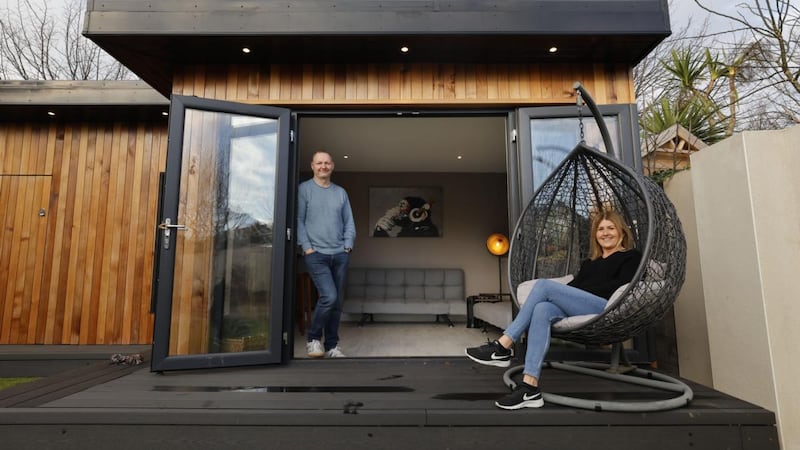
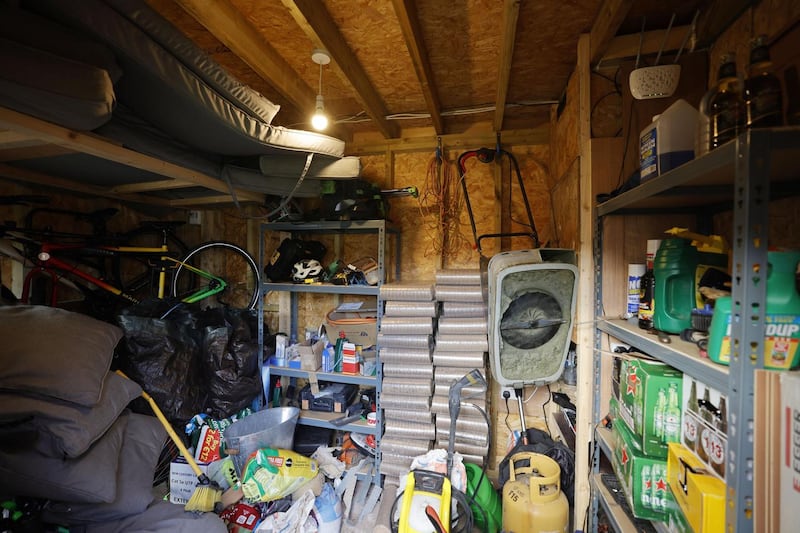

He shopped around for windows settling on designs from PVC Mike, a Co Carlow-based DoneDeal vendor who sells a vast factory selection. He clad the exterior, the part you can see, in cedar.
Extending to just over 21sq m and conforming to height restrictions, he estimates his souped-up shed cost €12,000-€13,000.
The labour involved was significant. He estimates it took three full months to complete. Because of his shiftwork he was able to focus on it during his three-week off periods. He also paid a plumber and an electrician but otherwise did all the work himself, although his four kids, Adelle (18), Hannah (16), Ava, (14) and Tom (12), helped out too sometimes before school.
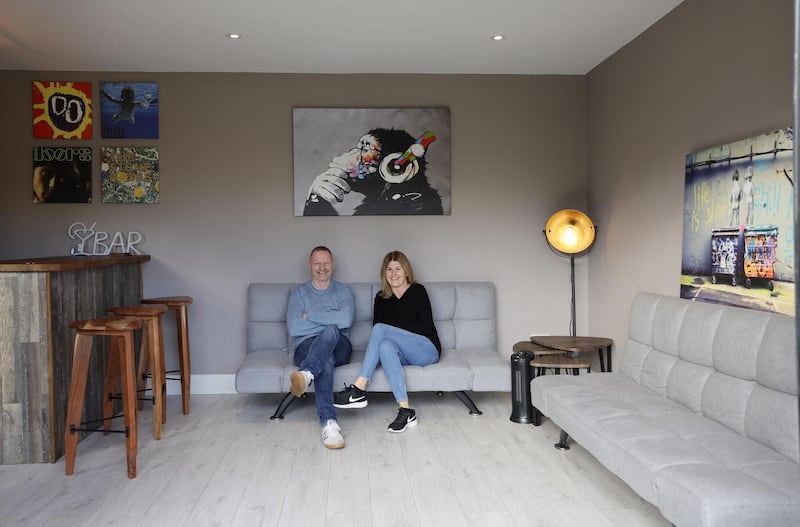
The 21-day periods gave him the time to get stuck in and build momentum, something he’s not sure you would be able to do if only working on it at weekends. “For someone only doing it on the weekend it’s going to take forever. It’s a big effort.”
He rates the project as being eight out of 10 in terms of difficulty. “To be able to say I did it all myself and almost all single-handedly – although at times I needed an extra pair of hands ... the satisfaction was the best benefit of all,” he says.
Joe’s cow house
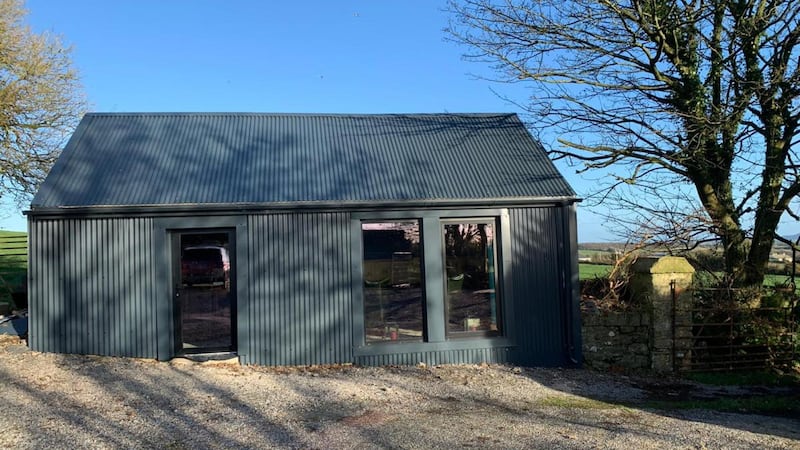
Architect Joe Fallon took another approach, renovating an existing, asbestos-roofed cow house and turning it into a hipster shed. He already had a lot of the materials, which had been saved from skips and previous projects. These included a 1970s glass panel that he salvaged from his mother’s house in Templeogue in Dublin a decade ago and Liscannor stone slabs of the same vintage that came out of the Lord Lucan pub in Lucan. His shed is part private shebeen, part lounge.
In his expert opinion you need a carpenter to do the roof and an electrician to install the sockets. If you want a stone floor then you’ll need an expert in that field too.
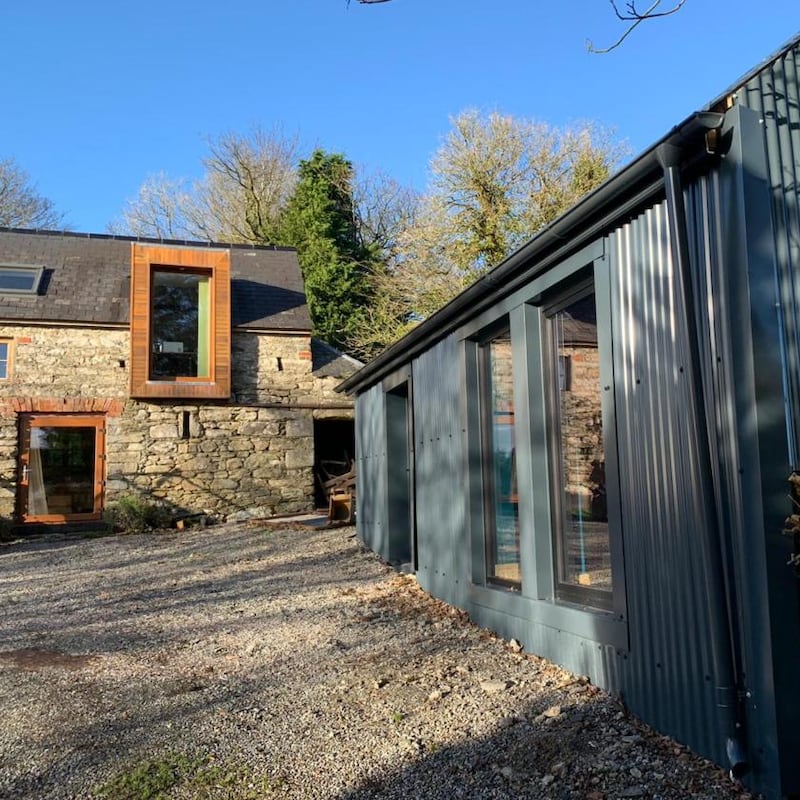

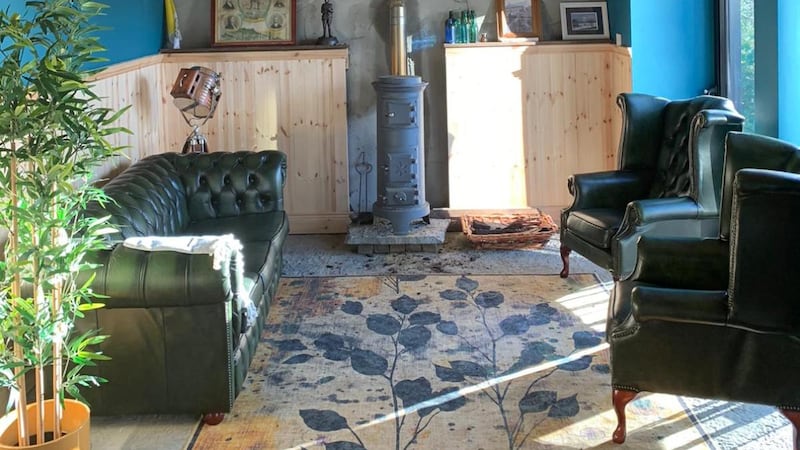
Does it need foundations? “If the shed is to be block-built it will need foundations. You will need a handyman builder to execute this properly. Plans are also recommended,” Fallon says. “How much it will cost will depend on budget. If you don’t have plans and don’t know the builder then it’s like an open cheque.”
Tradesmen.ie is a resource where you can tender out a job and get up to four quotes for the works from professionals in your area.
Shed of the Year
With its Shed of the Year competition, Cuprinol, a brand of wood paint that can also be used on stone and brick, much like a masonry paint, tapped into this trend way before the pandemic when it launched the contest in 2006.
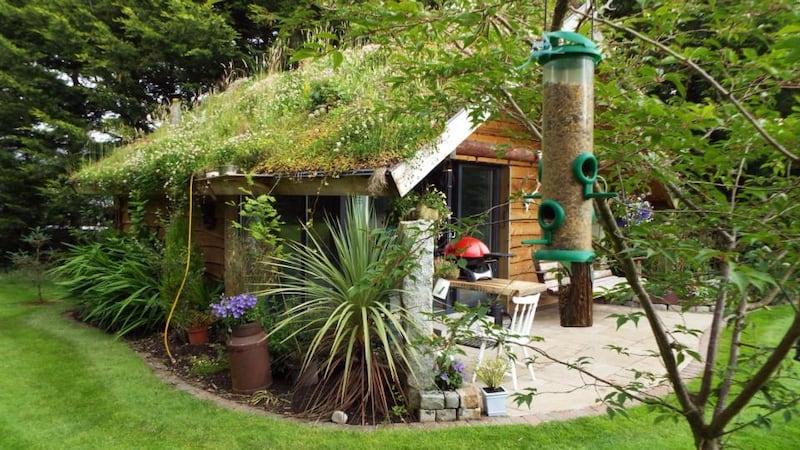
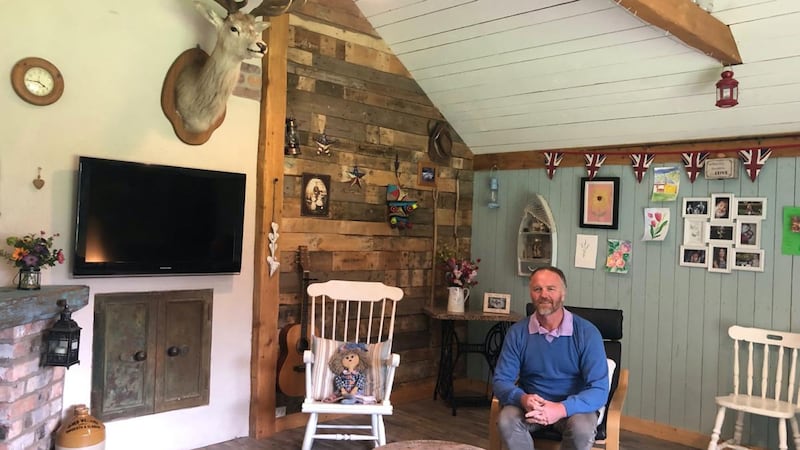
While many of the contestants customise existing shop-bought sheds, there is a shift towards building your own. A 2020 finalist was Trevor Carswell from Northern Ireland. His fetching design included a living green roof, to help it blend into the mature tree background of its environment.
If bog-standard sheds leave you cold but you don’t want to build from scratch then consider Aeropods, a new side project for Kevin Regan and his business partner Shane Thornton, whose main job is tracking leaks within Ireland’s water system.
Regan, a self-confessed plane spotter, whose holiday home is within the shadow of Carrickfinn airport in northwest Co Donegal. He has all the apps on his phone to track flightpaths and to see which planes have passed overhead. His business partner Thornton sent him a photo of the carcass of an aeroplane and the next thing they were in possession of one and spent the next four months trialling options.
You can now buy the pods – which start from about 12sq m – at prices starting at €23,000, inclusive of VAT. He has one in Tyrconnell and it survived Storm Barra unscathed. His younger teenage sons have eyes on spending their summer there – social distancing from their parents.
joefallon.com; alidymock.com; rubber4roofs.co.uk; aeropods.ie; cuprinol.ie



















